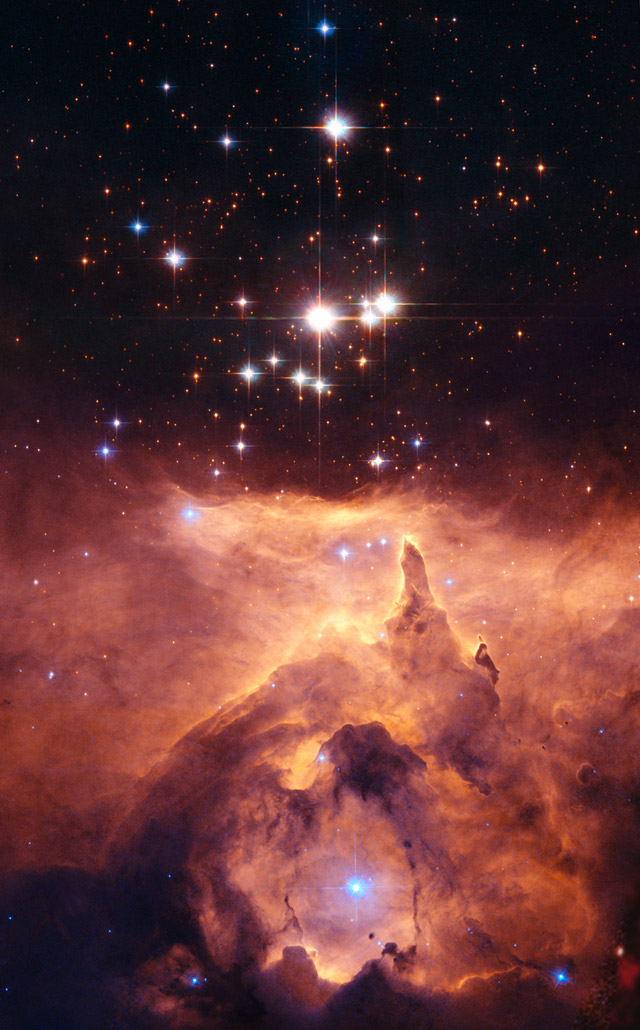National Aeronautics and Space Administration
Goddard Space Flight Center

Sun-Earth Day 2009: Our Sun Yours to Discover
IMAGE GALLERY

- Pismis 24 and NGC 6357
The small open star cluster Pismis 24 lies in the core of the large emission nebula NGC 6357 in Scorpius, about 8,000 light-years away from Earth. Some of the stars in this cluster are extremely massive and emit intense ultraviolet radiation. The brightest object in the picture is designated Pismis 24-1. It was once thought to weigh as much as 200 to 300 solar masses. This would not only have made it by far the most massive known star in the galaxy, but would have put it considerably above the currently believed upper mass limit of about 150 solar masses for individual stars. However, high-resolution Hubble Space Telescope images of the star show that it is really two stars orbiting one another (inset pictures at top right and bottom right). They are estimated to each be 100 solar masses. The Hubble Advanced Camera for Surveys images were taken in April 2006. This image was taken from Hubblesite.org
[Sun-Earth Day Note: By observing other stars in our universe, we learn more about our own star, the Sun. Portions of this amazing image were used in this year's Sun-Earth Day folder and website banners.]
NASA Fact
Over $2 billion in satellite technology was damaged or destroyed during the last sunspot cycle.
